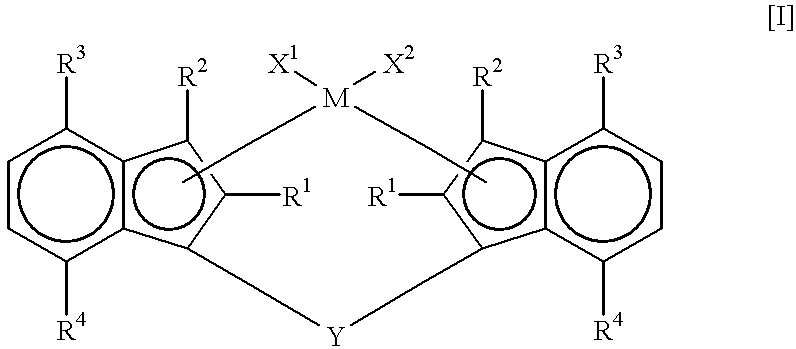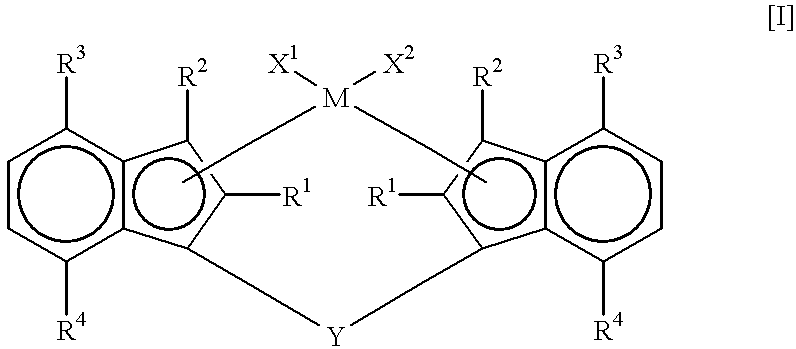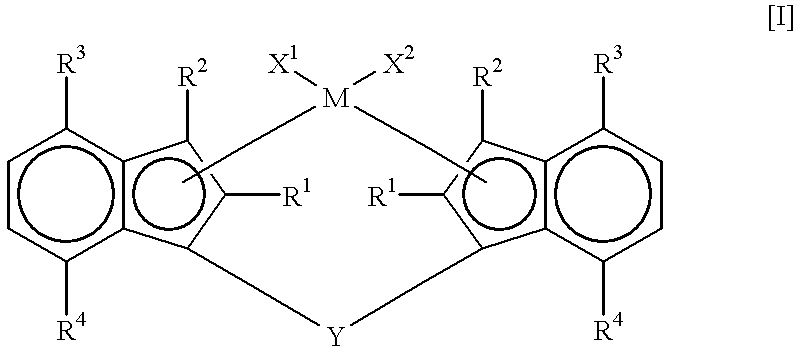Laminating propylene/1-butene random copolymer composition and composite film using the same
a technology of random copolymer composition and composite film, which is applied in the direction of transportation and packaging, other domestic articles, synthetic resin layered products, etc., can solve the problems of poor welding of heat seal portions and fusion, increase of film fluctuation, and poor moldability of laminates, and achieve blocking resistance and hot tack, excellent low-temperature sealing properties
- Summary
- Abstract
- Description
- Claims
- Application Information
AI Technical Summary
Benefits of technology
Problems solved by technology
Method used
Image
Examples
production example 1
Production of Propylene / 1-butene random Copolvmer (PBR-1)
900 ml of hexane and 60 g of 1-butene were charged into a 2-lit. autoclave satisfactorily purged with nitrogen. 1 mmol of triisobutylaluminum was added thereto and heated to 70.degree. C. Subsequently, propylene was fed to a total pressure of 7 kg / cm.sup.2 -G, and 0.30 mmol of methylaluminooxane and 0.001 mmol, in terms of Zr atom, of rac-dimethylsilylene-bis[1-(2-methyl-4-phenylindenyl)]zirconium dichloride were added. Polymerization was carried out for 30 min while continuously supplying propylene and while maintaining the total pressure at 7 kg / cm.sup.2 -G. After the polymerization, deaeration was conducted and a polymer was recovered in a large volume of methanol. The polymer was dried in vacuum at 110.degree. C. for 12 hr.
The yield of the thus obtained polymer (propylene / 1-butene random copolymer (PBR-1)) was 39.7 g, so that the polymerization activity was 79 kg-polymer / mmolZr-hr.
This polymer was analyzed and it was found...
production example 2
Production of Propylene / 1-butene random Copolymer (PBR-2)
830 ml of hexane and 100 g of 1-butene were charged into a 2-lit. autoclave satisfactorily purged with nitrogen. 1 mmol of triisobutylaluminum was added thereto and heated to 70.degree. C. Subsequently, propylene was fed to a total pressure of 7 kg / cm.sup.2 -G, and 1 mmol of triethylaluminum and 0.005 mmol, in terms of Ti atom, of titanium catalyst supported on magnesium chloride were added. Polymerization was carried out for 30 min while continuously supplying propylene and while maintaining the total pressure at 7 kg / cm.sup.2 -G. After the polymerization, deaeration was conducted and a polymer was recovered in a large volume of methanol. The polymer was dried in vacuum at 110.degree. C. for 12 hr.
The yield of the thus obtained polymer (propylene / 1-butene random copolymer (PBR-2)) was 33.7 g, so that the polymerization activity was 14 kg-polymer / mmolZr-hr.
This polymer was analyzed and it was found that the content of structur...
example 1
Preparation of Propylene / 1-butene Random Copolymer Composition
90 parts by weight of propylene / 1-butene random copolymer (PBR-1) obtained in Production Example 1 and 10 parts by weight of low-density polyethylene (density: 0.917 g / cm.sup.3, MFR: 7 g / 10 min, crystallinity: 4%, content of structural units derived from ethylene: 80 mol % and content of structural units derived from propylene: 20 mol %) were mixed together in molten state at 280.degree. C., thereby obtaining a propylene / 1-butene random copolymer composition.
An extrusion coating (laminate molding) of this composition was performed on a biaxially oriented polypropylene film layer having a thickness of 20 .mu.m under the following conditions, thereby forming a composite film.
Molding conditions
Film layer construction and thickness of each layer: thickness of biaxially oriented polypropylene film layer (substrate film layer) / thickness of composition layer=20 .mu.m / 20 .mu.m,
Molding machine: extruder with a die diameter of 65 m...
PUM
| Property | Measurement | Unit |
|---|---|---|
| thick | aaaaa | aaaaa |
| mol % | aaaaa | aaaaa |
| mol % | aaaaa | aaaaa |
Abstract
Description
Claims
Application Information
 Login to View More
Login to View More - R&D
- Intellectual Property
- Life Sciences
- Materials
- Tech Scout
- Unparalleled Data Quality
- Higher Quality Content
- 60% Fewer Hallucinations
Browse by: Latest US Patents, China's latest patents, Technical Efficacy Thesaurus, Application Domain, Technology Topic, Popular Technical Reports.
© 2025 PatSnap. All rights reserved.Legal|Privacy policy|Modern Slavery Act Transparency Statement|Sitemap|About US| Contact US: help@patsnap.com



